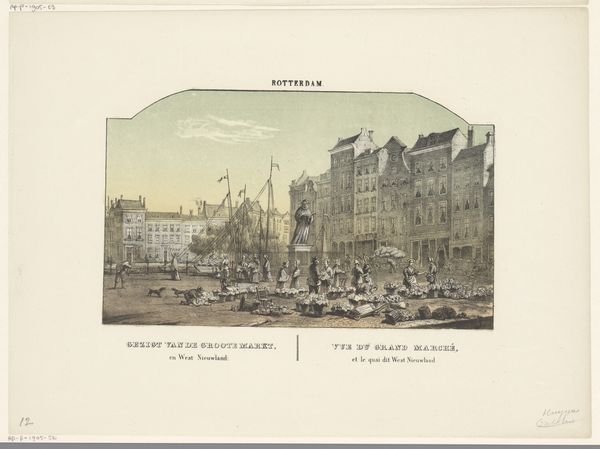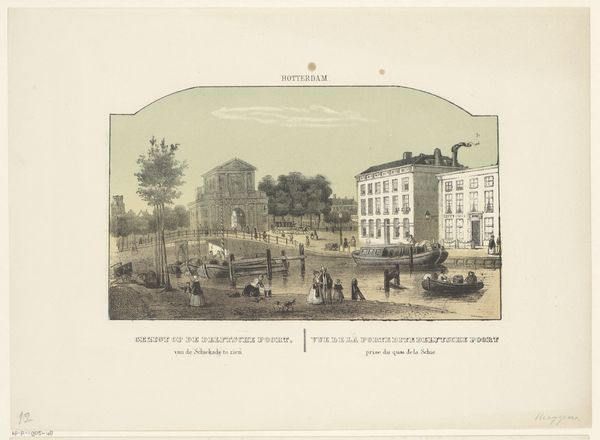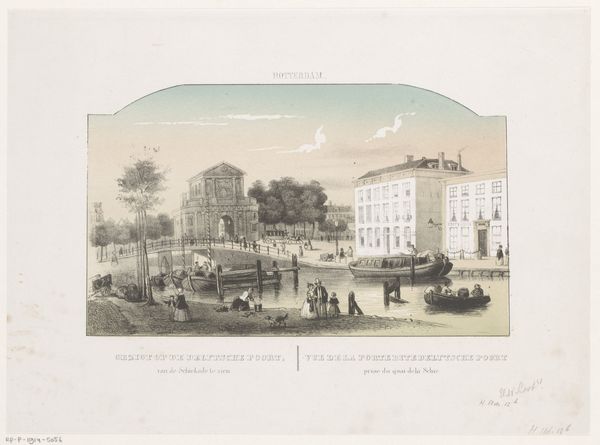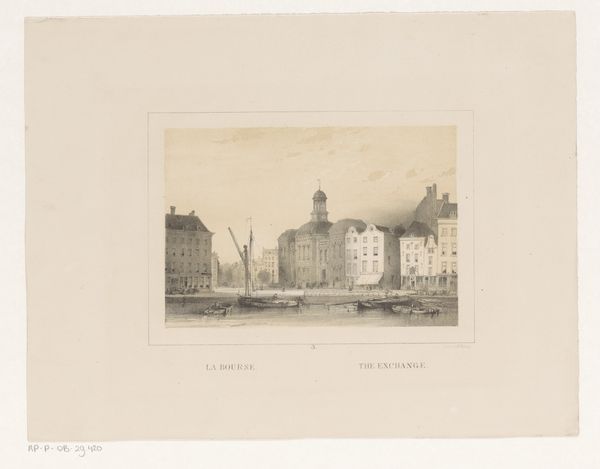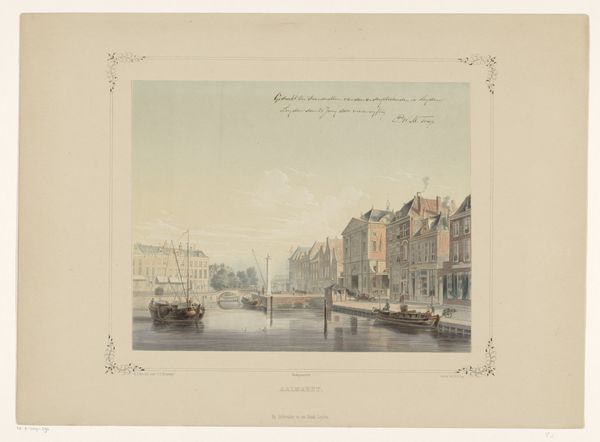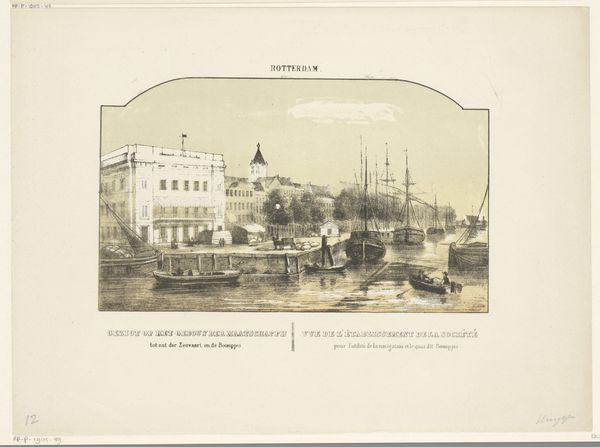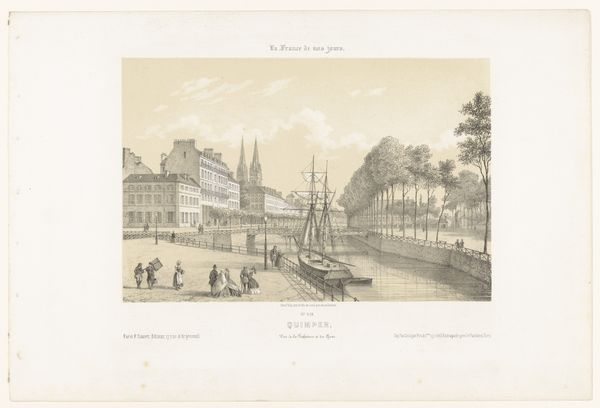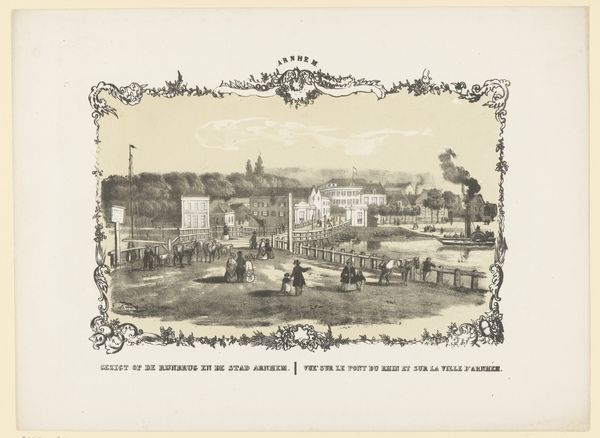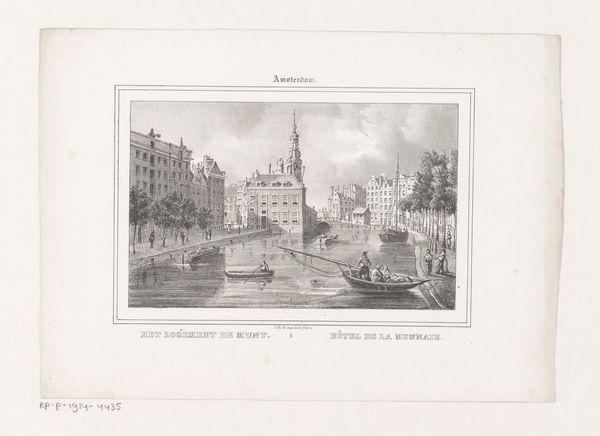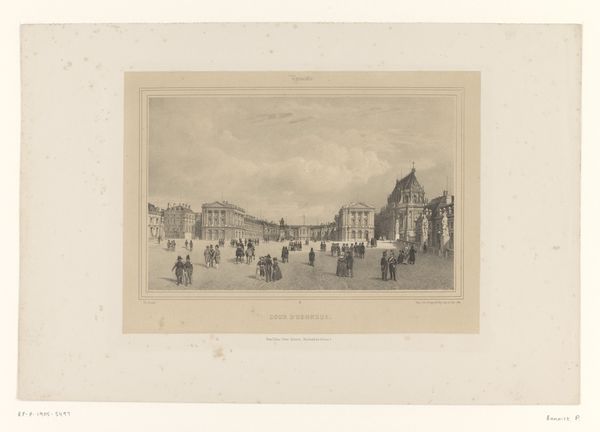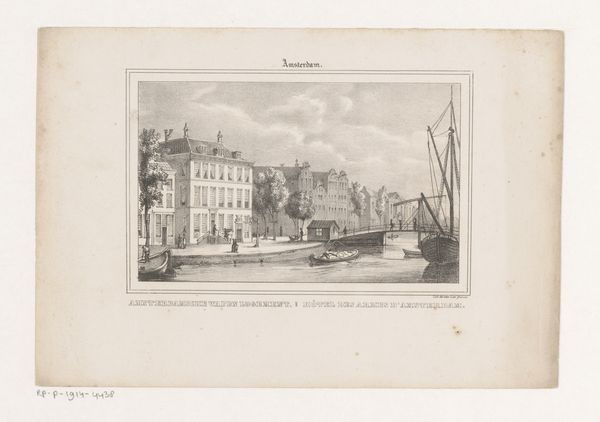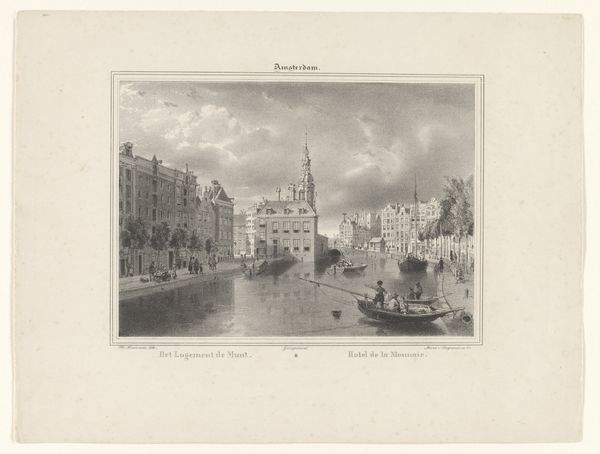
print, engraving
#
dutch-golden-age
# print
#
old engraving style
#
landscape
#
cityscape
#
engraving
#
realism
Dimensions: height 270 mm, width 375 mm
Copyright: Rijks Museum: Open Domain
Curator: Here we have a print from sometime between 1812 and 1887 titled "Gezicht op de beurs in Rotterdam," held here at the Rijksmuseum. It's attributed to Frederik Lodewijk Huygens. Editor: Oh, it has this muted, dreamy quality about it. I feel like I'm peering into someone's pleasant memory. There is a placid feeling but in monochrome with gentle colour, like a water stain on the past. Curator: Yes, it's an engraving, which lends itself to that linear, almost ethereal quality. Look closely at the architecture; it's a precise depiction of Rotterdam's stock exchange as it existed then. The very structure becomes an embodiment of burgeoning Dutch commerce. Editor: The water mirroring the building gives this impression that the solid foundation is rippled. Trade isn't static, is it? Though the water is busy the colour palette keeps the eye wandering. The boats bob, but almost to a slow song... Curator: Engravings were, of course, reproducible. This image speaks volumes about the dissemination of visual information, the creation of civic identity and pride through affordable art. These images reached a far wider audience than painting did, and at scale. Editor: You're so right. And the technique, all those tiny, intentional lines… each pull of the burin building the whole scene like the strokes on an old printer. Curator: It's interesting to consider the role these images played in shaping how people understood their place in the world, and in shaping urban experience in general, from business to society, because here you're not invited "inside". The market or Exchange becomes part of an experience... Editor: Makes you wonder how much reality it actually conveys though, or are they as accurate as looking at a memory now. Do our photos actually say it as it is too. The city is romanticised somehow - perhaps they focused more on getting the water level than social documentary. Curator: A fair point. But it does offer insight into the artistic conventions and the mechanics of representation at that moment in history - that blend of function and representation Editor: Precisely, I feel like now I better grasp this time that can seem, until you consider something tangible, far away. Curator: A valuable piece to engage with how Rotterdam viewed its economic heart in that era and how that identity was actively constructed.
Comments
No comments
Be the first to comment and join the conversation on the ultimate creative platform.
